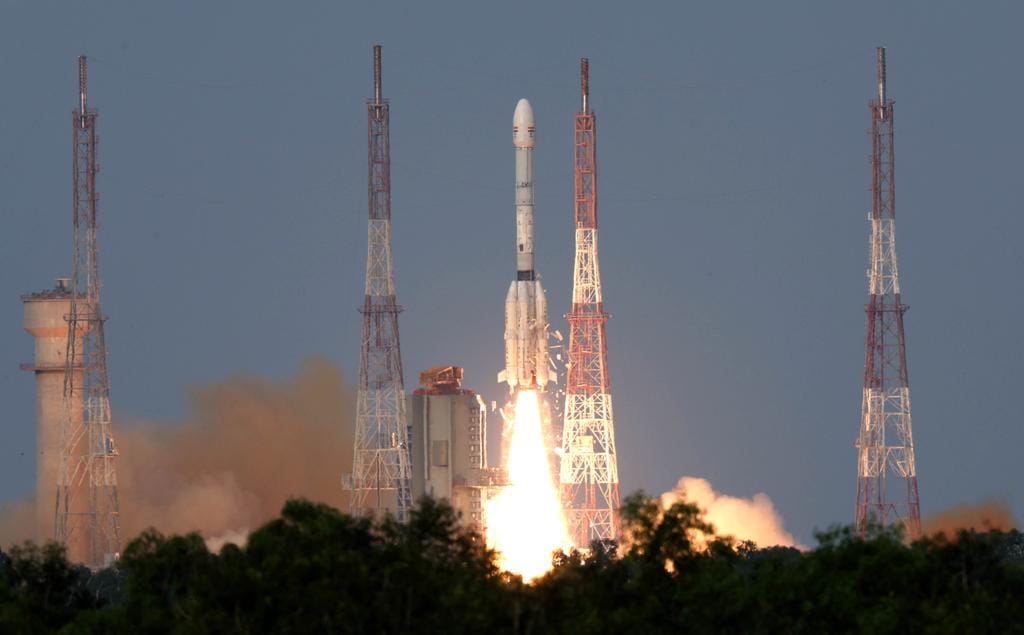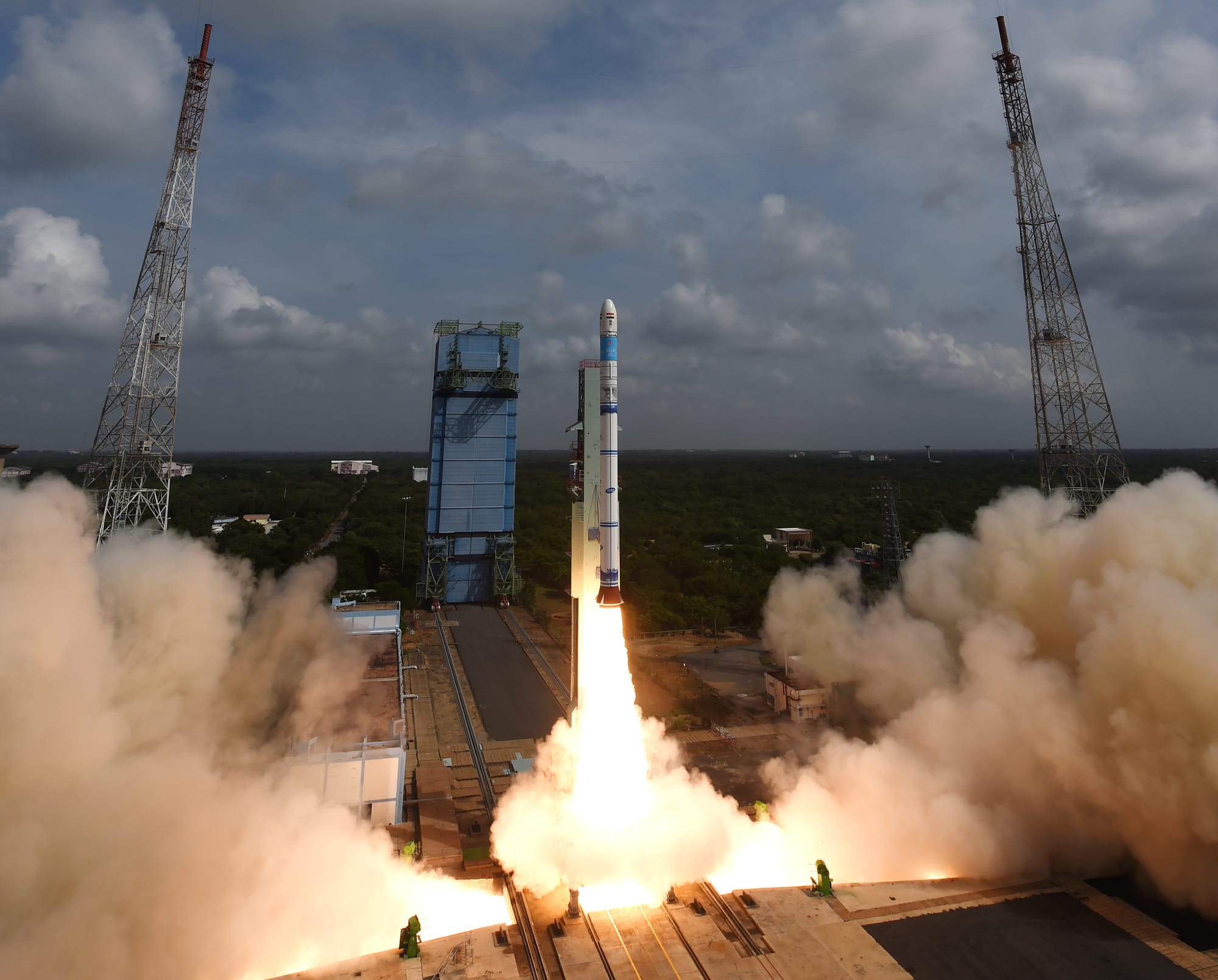Table of Contents
The joint 1.5 billion United States Dollar, 2,393 kilogram NISAR (NASA-ISRO Synthetic Aperture Radar) spacecraft was carried to a 747-kilometer, 98.4-degree sun-synchronous orbit earlier today.
Launch of NISAR atop of the Geosynchronous Satellite Launch Vehicle Mark II occurred at 12:10 Universal Coordinated Time from the Satish Dhawan Space Centre's Second Launch Pad, located on the coast of Andhra Pradesh.
The flight to get into orbit took about nineteen minutes using the rocket's three stages, the first a combination of hypergolic liquid-fueled and solid boosters, followed by a hypergolic fuel second-stage, and completed with a liquid hydrogen and liquid oxygen stage. Moments after reaching orbit, NISAR was separated from the rocket's third-stage, to substantial celebrations in the launch control rooms.
Now floating free in space, NISAR will gradually power on and deploy its various systems, including its massive twelve-meter Radar Antenna Reflector held by a nine-meter-long deployable boom. A commissioning period for the spacecraft is planned to last ninety days to ensure all systems are functioning as designed.
The spacecraft's reflector will focus radar signals sent out by the L-Band (24 centimeter wavelength) and S-Band (12 centimeter wavelength) synthetic aperture radars and bounce them toward the Earth. After reaching the ground, the signals will be returned up to the spacecraft for processing and measurements.

Once operating as designed, NISAR will gather data on ecosystem disturbances, polar ice changes, natural hazards, sea level rise, and groundwater issues. Data collected is expected to help understand natural disasters such as landslides and earthquakes, and assist in responses to disasters like hurricanes, floods, and volcanic eruptions.
NISAR will observe the entire Earth every twelve days, repeating the process over at least three years to watch for changes. With the satellite being in a sun-synchronous orbit, all areas of the planet will be observed along a perpetual sunrise.
Throughout its mission, NISAR will gather around one hundred petabytes of data, for around eighty terabytes a day. To ensure as much of the data as possible can be utilized, the spacecraft has a high-capacity solid-state recorder as well as a 3.5 gigabit per second Ka-band communication system.
The NISAR mission is part of a recent flurry of an American-Indian partnership in space. In June 2023, India joined the U.S.-led non-binding Artemis Accords while a NASA payload got a ride to the lunar surface onboard the Chandrayaan-3 Moon mission. Most recently, an Indian astronaut, Shubhanshu Shukla, flew to the International Space Station on board a SpaceX Crew Dragon.
Leaders in India and the U.S. expect further space cooperation between the two countries in the future.






